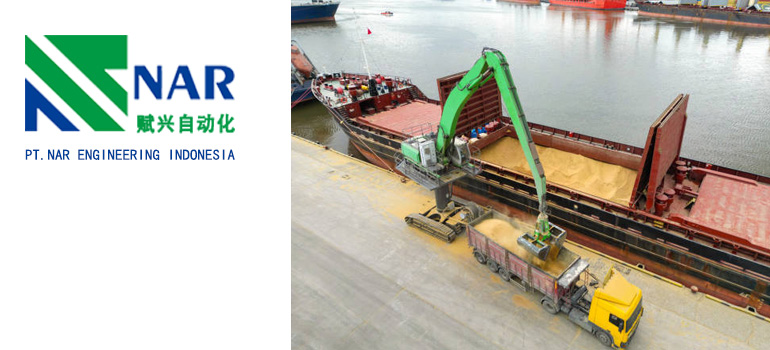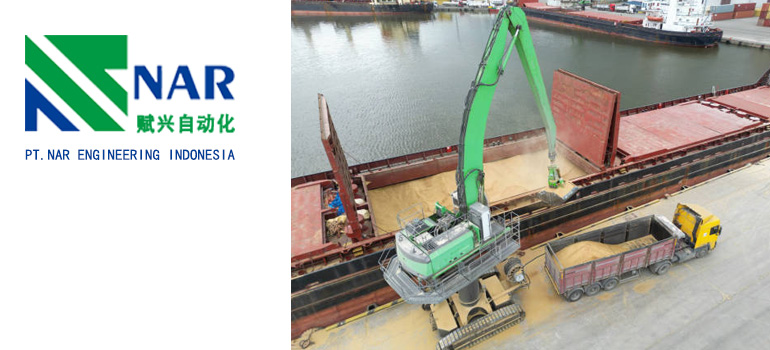Summary:
Elevate Your Workflow: Best Practices for Loading and Unloading Equipment
what is Loading and unloading equipment
Choosing the Right Loading and Unloading Equipment
Technology Integration for Loading Efficiency
Optimizing Unloading Processes
Hey there! Welcome to the world of elevating your workflow through the best practices for loading and unloading equipment. In this section, we’ll dive into the core aspects that make loading and unloading operations not just a task but an art.
What is Loading and unloading equipment
Loading and unloading equipment refers to a variety of machinery and tools designed to facilitate the movement of goods, materials, or products onto and off of transportation vehicles, such as trucks, ships, or planes. These equipment are crucial components of logistics and supply chain operations, playing a key role in ensuring the efficient and safe transfer of cargo.
Here are some common types of loading and unloading equipment:
Forklifts: These are versatile vehicles equipped with fork-like prongs that can lift and move pallets of goods. Forklifts are widely used in warehouses and distribution centers.
Conveyor Belts: Conveyor systems are used to move goods along a continuous belt, making it easier to load or unload items from one point to another. They are commonly found in manufacturing facilities and distribution centers.
Loading Dock Equipment: This includes dock levelers, dock seals, and dock shelters that facilitate the smooth transition of goods between a loading dock and a transportation vehicle.
Cranes: In industrial settings or ports, cranes are employed for lifting and positioning heavy or oversized items onto ships or trucks.
Pallet Jacks: Also known as pallet trucks or pump trucks, these manual or electric tools are used to lift and move palletized loads within a confined space.
Automated Guided Vehicles (AGVs): These are autonomous, self-driving vehicles used for material handling tasks in warehouses and distribution centers.
Loading Ramps: Ramps provide a sloped surface for the movement of goods between different levels, such as between a truck bed and a loading dock.
The choice of loading and unloading equipment depends on the type of goods, the nature of the operation, and the specific requirements of the logistics process. Effectively utilizing these tools can significantly enhance the efficiency, speed, and safety of material handling and transportation activities.
Choosing the Right Loading and Unloading Equipment
Now that we’ve grasped the importance of loading and unloading equipment, let’s embark on the journey of selecting the right tools for the job. It’s not just about having equipment, it’s about having the right equipment tailored to your specific needs.
Considerations for Equipment Selection
Selecting the right loading and unloading equipment is a pivotal decision that directly impacts the efficiency and safety of your operations. Here, we’ll delve into the key considerations to ensure you make choices aligned with the unique demands of your logistical tasks.
Payload Capacity
Understanding the weight-bearing capacity of your equipment is paramount. Different items come with varying weights, and your equipment must be capable of handling the heaviest loads it might encounter. We’ll guide you through assessing and matching payload capacities to your operational requirements.
Space Constraints and Layout
No two spaces are alike, and your choice of equipment should seamlessly fit into your existing layout. We’ll explore considerations such as aisle width, ceiling height, and the overall spatial dynamics. Navigating through these factors ensures your equipment enhances, rather than hinders, the flow of your workspace.
Nature of Goods Being Handled
Are you dealing with fragile goods, hazardous materials, or perishable items? The nature of your goods plays a pivotal role in determining the type of equipment needed. We’ll discuss how to align your equipment choices with the specific characteristics and handling requirements of the items in your inventory.
Operational Flexibility
Adaptability is key in the dynamic world of logistics. We’ll guide you through evaluating the flexibility of your chosen equipment. Can it handle diverse tasks? Is it easily reconfigurable? We’ll help you make choices that empower your operations to meet changing demands effectively.
Maintenance and Training Considerations
Beyond the initial selection, we’ll shed light on the ongoing aspects of equipment ownership. How easy is it to maintain? What kind of training is required for your team to operate it safely and efficiently? These considerations are vital for the long-term success of your logistics setup.
By carefully weighing these considerations, you’ll be better equipped to choose loading and unloading equipment that seamlessly integrates into your operations, optimizing efficiency and ensuring a smooth workflow.
Technology Integration for Loading Efficiency

In the fast-paced world of logistics, staying ahead often involves embracing cutting-edge technologies. When it comes to loading and unloading equipment, integrating technology can significantly enhance efficiency. Let’s explore how you can leverage tech to streamline your loading processes.
Automation and Robotics
Discover the transformative power of automation and robotics in loading operations. We’ll delve into the role of automated guided vehicles (AGVs) and robotic systems, showcasing how they can speed up loading processes, reduce errors, and optimize resource utilization.
Smart Sensors and IoT Connectivity
Unlock the potential of smart sensors and the Internet of Things (IoT) in your equipment. We’ll discuss how sensors can provide real-time data on load conditions, helping you monitor and adjust processes for maximum efficiency. Learn about the connectivity that turns your equipment into intelligent, data-driven assets.
RFID and Barcode Technology
Efficient tracking is fundamental to loading operations. Explore the use of RFID and barcode technology to streamline inventory management and ensure accurate loading. We’ll guide you through the implementation of these technologies and their impact on reducing errors and enhancing traceability.
AI-powered Planning and Optimization
Artificial Intelligence (AI) isn’t just a buzzword; it’s a game-changer in logistics. Understand how AI algorithms can optimize loading plans, taking into account various factors such as item weight, size, and delivery schedules. This results in smarter, more efficient loading sequences.
Cloud-Based Management Systems
Say goodbye to traditional paperwork and embrace cloud-based management systems. We’ll discuss how cloud technology facilitates real-time collaboration, data storage, and analytics. Learn how these systems contribute to better decision-making and overall efficiency in loading and unloading operations.
By exploring the integration of these technologies, you’ll be equipped to elevate your loading efficiency to new heights. The future of logistics is tech-driven, and staying at the forefront ensures your operations are not just efficient but also prepared for the challenges of tomorrow.
Optimizing Unloading Processes
Unloading processes are the counterpart to loading in the intricate dance of logistics. Let’s explore strategies and best practices for optimizing unloading operations, ensuring a seamless flow from the transportation vehicle to your storage or distribution area.
Streamlining Unloading Operations
Efficiency is the name of the game. We’ll delve into techniques for streamlining unloading processes, from efficient organization of goods on the vehicle to strategic unloading sequences. Learn how to minimize downtime and enhance the overall speed of unloading.
Unloading Equipment Maintenance Tips
Your unloading equipment is a valuable asset, and keeping it in top-notch condition is crucial. We’ll provide maintenance tips and best practices to ensure your equipment operates smoothly. Regular maintenance not only prevents breakdowns but also extends the lifespan of your machinery.
Safety Measures during Unloading
Safety is non-negotiable in any logistics operation. We’ll discuss comprehensive safety measures during unloading, covering aspects such as personnel training, equipment protocols, and emergency procedures. Creating a secure environment ensures the well-being of your team and the protection of your goods.
So, join us in this exploration of optimizing unloading processes. From the moment the vehicle arrives at your facility to the careful placement of goods in your storage area, we’ll guide you through the steps to make unloading as efficient and safe as possible. Get ready to elevate your unloading operations to a new level of effectiveness.
Maybe you are interested in the following: Optimization strategy for bulk ship loading: efficient, safe, and worry free

